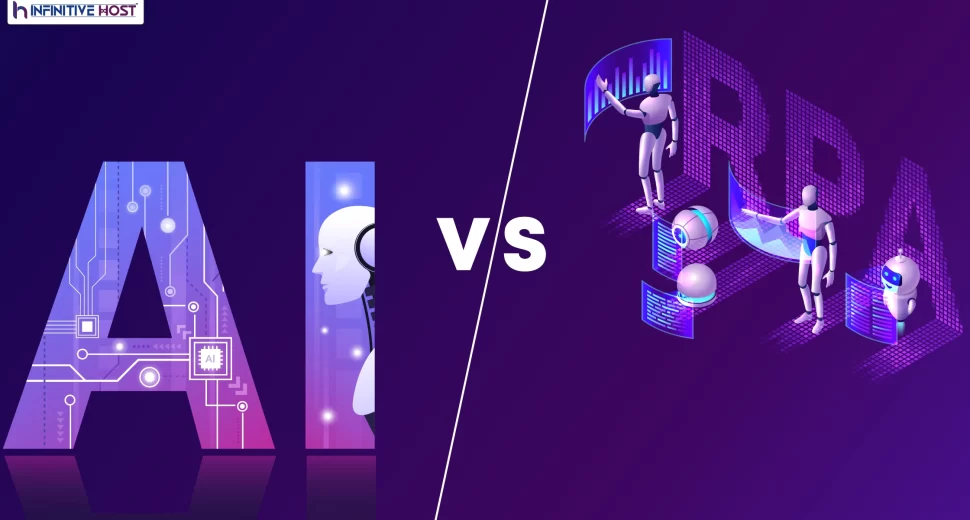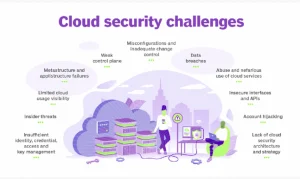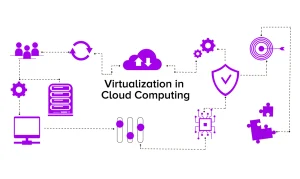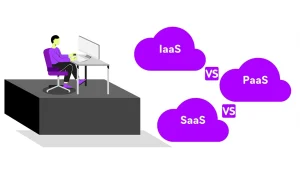Introduction
Robotic Process Automation (RPA) and Artificial Intelligence (AI) are two technologies that are transforming the way businesses operate. However they can share similarities to some extent, but they differ from each other. Many organizations are often confused about which technology they should implement to streamline their processes and increase efficiency.
In this blog, we will explore the differences between RPA and AI and help you determine which technology is best for your organization.
What Is RPA?

Robotic Process Automation (RPA) is a technology that automates repetitive and rule-based processes that are typically performed by humans. RPA uses software robots or bots to perform tasks such as data entry, invoice processing, and customer service inquiries.
RPA works by mimicking the actions of a human user interacting with a software application. RPA bots can read data, extract information, and perform actions such as clicking buttons and entering data. RPA bots can work 24/7 without the need for breaks, making them an excellent tool for increasing efficiency and reducing errors.
What Is AI?
Artificial Intelligence (AI) is a broader term that encompasses several technologies, including machine learning, natural language processing, and computer vision. AI is designed to simulate human intelligence and perform tasks that typically require human intelligence, such as problem-solving, decision making, and pattern recognition.
Machine learning is a subset of AI that involves training algorithms to learn from data and improve over time. Natural language processing (NLP) is a form of AI that allows machines to understand and interpret human language. Computer vision is another type of AI that enables machines to interpret and analyze visual information.
Differences Between RPA And AI
While both RPA and AI are technologies that automate processes, there are some key differences between them.
1. Level of Automation
RPA is a technology that automates repetitive and rule-based processes, whereas AI is designed to perform tasks that typically require human intelligence, such as problem-solving and decision making.
2. Scope of Automation
RPA is typically used to automate structured and repetitive tasks, such as data entry and invoice processing. AI, on the other hand, can be used to automate a broader range of tasks, including unstructured tasks that require pattern recognition and decision making.
3. Level of Intelligence
RPA bots are programmed to perform specific tasks and follow a set of rules. They do not have the ability to learn from experience or improve over time. AI, on the other hand, is designed to learn from data and improve over time, making it more intelligent and adaptable than RPA.
4. Integration with Existing Systems
RPA is designed to work with existing systems and applications, making it easier to implement than AI. AI, on the other hand, often requires more integration work to get it up and running.
Related:- All-In-One Guide For Conversational AI & Productivity Hacks
Which Is Best For Your Organization?
Now that we have explored the differences between RPA and AI let’s discuss which technology is best for your organization.
Robotic Process Automation (RPA) and Artificial Intelligence (AI) are two technologies that are gaining a lot of traction in the business world. Both technologies offer great potential for organizations to improve their operations and increase efficiency. However, deciding which technology is best for your organization can be a challenge.
RPA: Automating Repetitive Tasks
RPA is a technology that uses software robots to automate repetitive tasks. This technology can be used to automate processes such as data entry, invoicing, and customer service. RPA is ideal for organizations that need to automate processes that are repetitive and rule-based.
AI: Intelligent Decision-Making
AI, on the other hand, is a technology that uses machine learning algorithms to make intelligent decisions. AI can be used to analyze data, make predictions, and recommend actions. AI is ideal for organizations that need to make decisions based on complex data sets.
Choosing The Right Technology
When choosing between RPA and AI, it is important to consider the specific needs of your organization. If your organization needs to automate repetitive tasks, then RPA may be the best choice. However, if your organization needs to make complex decisions based on data, then AI may be the better option.
Conclusion
After analyzing the features, benefits, and limitations of both RPA and AI, we can conclude that both technologies can be extremely beneficial for an organization depending on its requirements, goals, and budget. RPA is ideal for automating repetitive and rule-based tasks, whereas AI can be used to handle complex and cognitive tasks that require human-like intelligence.
However, implementing AI requires a higher level of expertise and resources than RPA, which can make it difficult for small and medium-sized businesses to adopt. Therefore, organizations must evaluate their needs and goals carefully before deciding which technology to implement. It is also essential to note that both RPA and AI are complementary technologies that can work together to provide better results and enhance business processes.









